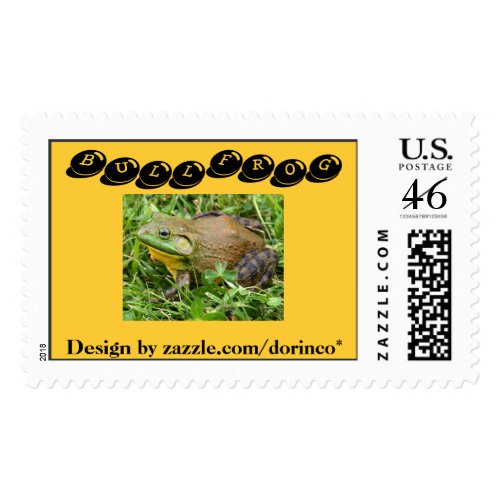I like this image above because it shows the full body (extended legs can be seen in other images), not just the head, or just the eyes, as in my other MCs, that you can see down below in this blogpost.
I printed a mailable postcard (not simply a photo print) with it, at winkflash.com.
I attached a bullfrog stamp, because I will definitely create a maximum card with it - I just wait for a concordant (pictorial) postmark opportunity from anywhere in USA .
Tell me about the postmark in the maxicard below, an MC created by a good friend of mine - not quite visible, huh?
Also, the bullfrog looks like an ordinary little frog, judging by the little you can see out of the water.
"The American Bullfrog (Rana catesbeiana)[1][2][3]), often simply known as the Bullfrog in Canada and the United States, is an aquatic frog, a member of the family Ranidae, or “true frogs”, native to much of North America.[4] "
"Stomach content studies going back to 1913 suggest the bullfrog preys on any animal it can overpower and stuff down its throat. Bullfrog stomachs have been found to contain rodents, small turtles, snakes, frogs—including bullfrogs, birds, even a bat, as well as the many invertebrates which are the usual food of ranid frogs."
"Prey motion elicits feeding behavior. First, if necessary, the frog performs a single orienting bodily rotation ending with the frog aimed towards the prey. This is followed by approaching leaps, if necessary. Once within striking distance, the bullfrog emits its feeding strike, which consists of a ballistic (eyes closed as during all leaps) lunge that ends with the mouth opening, extension of the fleshy and mucous-coated tongue upon the prey, often engulfing it, while the jaws continue their forward travel to close (bite) in close proximity to the prey's original location just as the tongue is retracted back into the mouth, prey attached. Large prey that do not travel entirely into the mouth are literally stuffed in with the forearms. In laboratory observations, bullfrogs taking mice usually dove underwater with prey in mouth, apparently with the advantageous result of altering the mouse's defense from counterattack to struggling for air."






